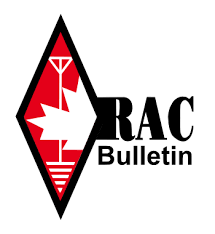RAC Ontario Sections Bulletin for February 10, 2024
Official Bulletin Station for Radio Amateurs of Canada with this week’s bulletin.
NATIONAL/INTERNATIONAL NEWS
1. World Radio Day
World Radio Day 2024 will be on February 13, and this year’s theme is, “A Century Informing,
Entertaining and Educating.”
World Radio Day was first celebrated in 2012, following its declaration by the United Nations
Educational, Scientific and Cultural Organization (UNESCO). It was subsequently adopted as
an International Day by the United Nations General Assembly.
The EA Digital Federation will celebrate the day and have nine special event stations
on the air February 9 – 18. The stations will be active on different bands and modes,
including phone, CW, and digital. You can locate the stations through the DX cluster
or the agenda of activity on their website.
Operating times and special QSL information can be found on their website.
https://www.fediea.org/news/?news=20240213
— from the ARRL Letter (Feb 9,2024)
ONTARIO SECTION NEWS
ITEMS OF INTEREST
2. Heil Radio Donates Equipment to W1AW
The Hiram Percy Maxim Memorial Station, W1AW, at ARRL HQ in Newington, CT,
has received a generous donation of equipment from the Heil Ham Radio division of Heil Sound.
At Bob Heil`s (K9EID) direction, the company donated four headsets, three headphones, two PTT
foot switches, two microphones, and various adapters. The equipment has been placed into service
for use by visiting operators, and for bulletins transmitted each weekday evening by W1AW.
— full article at arrl news
3. CATS – a new open source Communication And Telemetry System
At its core, CATS is a packet radio standard primarily designed for autonomous position reports,
but is versatile enough to support a much wider scope of communication.
CATS is ultimately meant to be a replacement to APRS. Although APRS was magnificent when it
was first developed, current technology allows us to do better. APRS also suffers from decades of
bloat, making the standard difficult to learn. Here are some of the ways CATS is better than APRS:
APRS is transmitted as AFSK over FM. This is an inefficient encoding technique which leaves a lot
of performance on the table. In contrast, CATS uses raw FSK. This alone provides a significant
coding advantage.
APRS is typically used at 1200 baud. CATS sets the standard data rate to 9600 baud.
Whereas APRS typically uses 2m for RF transmission, CATS uses 70cm.
CATS is extremely work-in-progress. Once things are solidified a bit more, the standard will be
locked down and all new changes must be backwards compatible.
for more information check out: https://cats.radio/
4. FEMA: 2023 National Household Survey on Disaster Preparedness.
Since 2013, FEMA has conducted the National Household Survey on Disaster Preparedness.
This survey of people from across the United States gauges disaster preparedness actions,
attitudes, and motivations. Results from the 2023 survey (7600 responses) indicate that slightly
more than half (51%) of Americans believe they are prepared for a disaster and 57% took three
or more actions to prepare for a disaster within the last year. The most common actions people
took to prepare for a disaster were assembling or updating disaster supplies (48%) and making
a plan (37%); the least common actions were planning with neighbors (12%) and getting involved
in their community (14%).
Key Findings include:
– There were big shifts in the way people prepared for disasters in 2023 compared to the year
before.
– Only 50% of people believed that that taking steps to prepare for a disaster would help them
in getting through a disaster and were confident in their ability to take those steps to prepare.
– There was a strong association between having awareness of how to prepare for disasters
and taking action to prepare.
– There was a disconnect between the 60+ community’s perceived preparedness and their
preparedness actions.
-Cost barriers may prevent people who are socioeconomically disadvantaged from taking
important preparedness actions.
– People living in areas at higher risk of flood and wildfire impacts had lower levels of risk
perception for those hazards.
— full article at arrl.org ares newsletter http://www.arrl.org/ares-el?issue=2024-01-17#toc04
This concludes this week’s bulletin.
Bulletin sent from Official Bulletin Manager VA3PC
RAC Ontario Sections Bulletin for February 10, 2024

